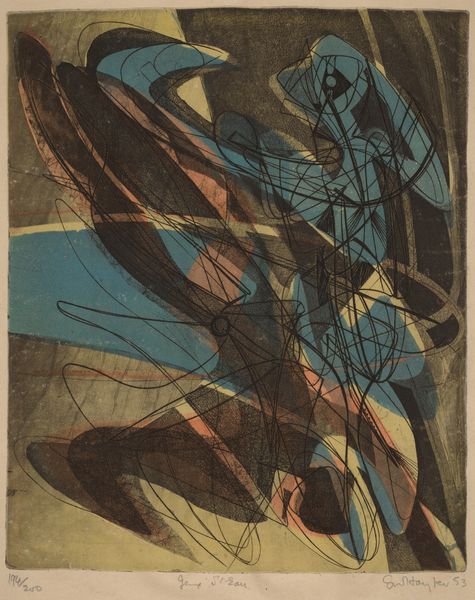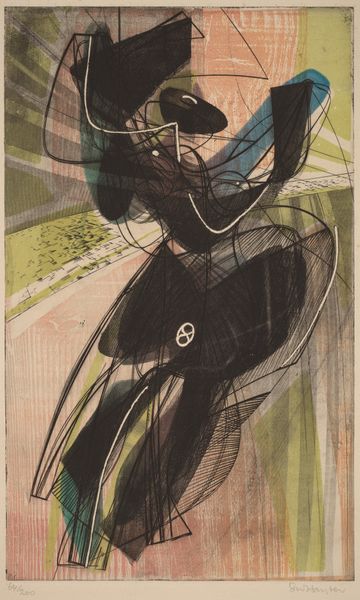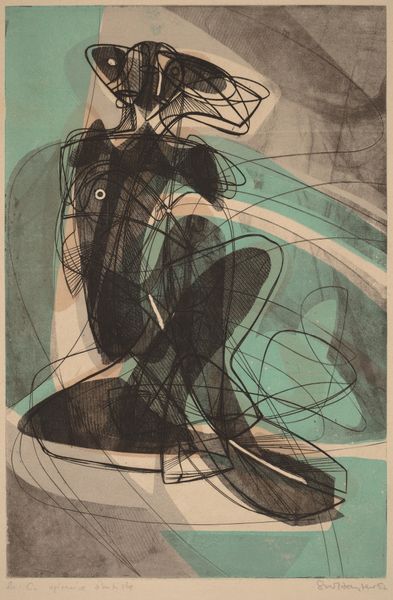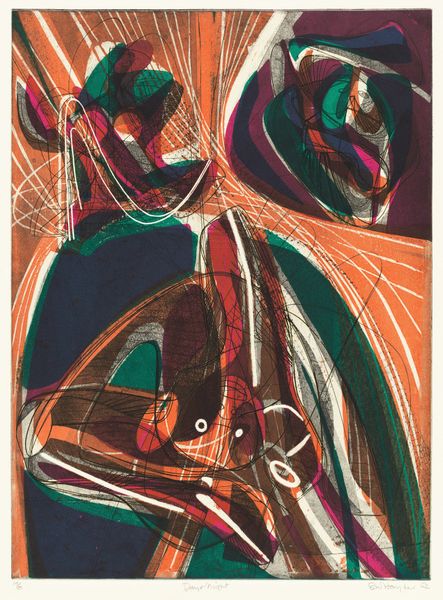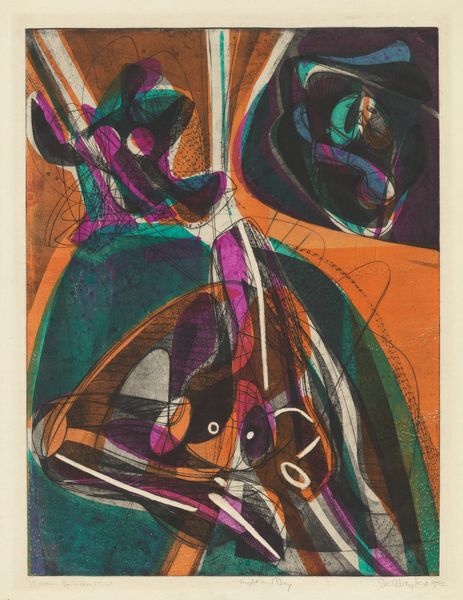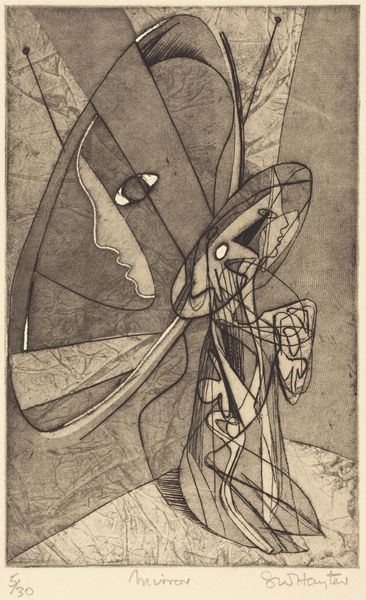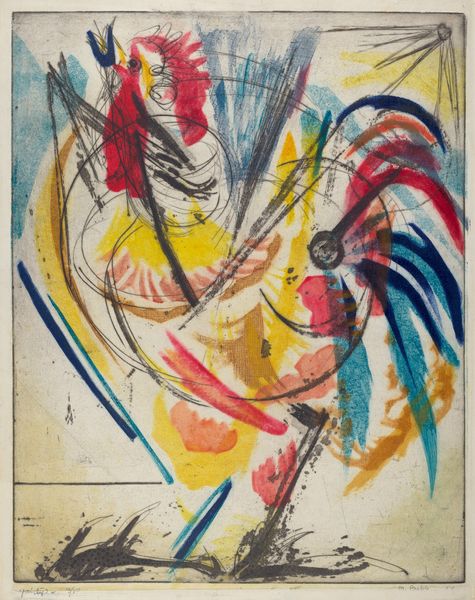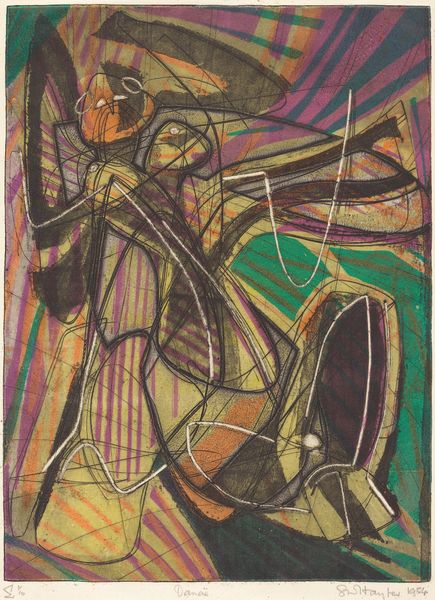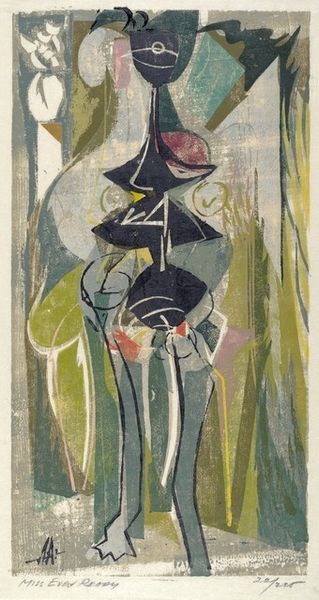
print, etching
#
abstract-expressionism
# print
#
etching
#
form
#
abstraction
#
line
Dimensions: plate: 29.8 x 20.3 cm (11 3/4 x 8 in.) sheet: 39.4 x 29.5 cm (15 1/2 x 11 5/8 in.)
Copyright: National Gallery of Art: CC0 1.0
Editor: So, this is Stanley William Hayter's "Combat," an etching from 1953. It's a very dynamic, abstract piece. There's so much energy! How do you even begin to interpret something this abstract? Curator: The title is a good starting point. Think about what "combat" evokes – conflict, struggle, energy. Now, look at the lines. They're not just decorative; they intersect, overlap, almost clash. Do you see any visual metaphors that resonate with the idea of struggle? Editor: Well, the lines definitely feel chaotic, like things are pulling in different directions. And some of the forms, though abstract, are vaguely aggressive. The spiky shapes, for example. Curator: Exactly. Hayter was deeply interested in the subconscious. He believed abstract forms could bypass our rational minds and speak directly to our emotions. This etching was created not long after the Second World War ended. How do you think the trauma and upheaval of those years might be relevant to Hayter’s aesthetic here? Editor: I can see that, given when it was made, "combat" takes on another layer. These clashing lines become a representation of the social and political chaos of that time, of conflict, both inner and outer. Curator: Precisely. Even the colours - the pink fighting against the blue - heighten the sense of unrest. Visual imagery often draws upon the subconscious. Consider that the colour of human blood might be the real point of origin for this image! It asks you to confront something unsettling. Does the imagery make you consider a need for social reform? Editor: Absolutely. I initially saw just abstract lines, but now I see the layers of meaning embedded in them – history, emotion, even a call to action through the cultural memory of what Hayter lived through. Curator: And that's the power of symbols, to hold and transmit meaning across time. A work of art such as this shows how personal experience informs how our cultural memory can affect future generations, too. It is also important to think about the psychology of colour, line, form, space, and texture in relation to the images’ possible impact upon a viewers’ overall impression of a work such as this!
Comments
No comments
Be the first to comment and join the conversation on the ultimate creative platform.

